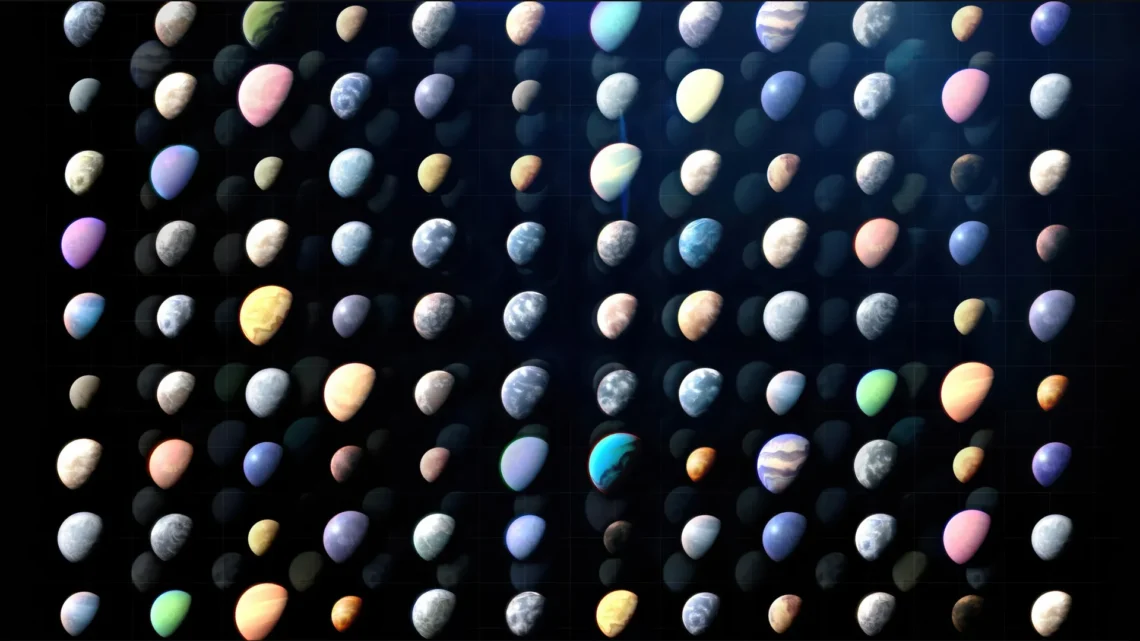NASA has officially confirmed 6,000 exoplanets, which are planets located outside our solar system. This number is continuously updated by scientists around the world, meaning there’s no single “6,000th” planet. The count is maintained by NASA’s Exoplanet Science Institute (NExScI), situated at Caltech’s IPAC in Pasadena, California. There are over 8,000 additional candidate planets yet to be confirmed, with NASA leading the global effort to discover life beyond Earth.
“This milestone showcases decades of exploration made possible by NASA’s space telescopes — an effort that has transformed how humanity sees the night sky,” said Shawn Domagal-Goldman, acting director of NASA’s Astrophysics Division in Washington. “Step by step, NASA missions have laid the groundwork for answering a pivotal question: Are we alone? With the forthcoming Nancy Grace Roman Space Telescope and the Habitable Worlds Observatory, America will spearhead the next major leap in studying worlds like our own orbiting stars similar to our Sun. This is a testament to American ingenuity and a promise of discovery that unites us all.”
This landmark comes 30 years after the first exoplanet was found orbiting a star similar to our Sun in 1995. Although researchers believe there are billions of planets in the Milky Way, discovering them is no easy task. As scientists identify more unique exoplanets, they can also compare their features to those in our solar system.
For instance, while our solar system has an equal number of rocky and gas giant planets, rocky planets seem to be more abundant in the universe. Some bizarre exoplanets discovered are much different from those in our solar system. They include massive gas giants orbiting extremely close to their stars, planets that revolve around two stars or none at all, and even planets enveloped in lava or having densities similar to Styrofoam and clouds made of gemstones.
“Each type of planet we discover provides insights about how planets form and how common Earth-like planets might be,” said Dawn Gelino, head of NASA’s Exoplanet Exploration Program (ExEP) at the Jet Propulsion Laboratory in Southern California. “To determine if we’re alone in the universe, this knowledge is crucial.”
Searching for Other Worlds
So far, fewer than 100 exoplanets have been directly imaged because most are too faint to be seen against the glare of their parent stars. Astronomers often employ indirect methods for planet detection, like the transit method, where a dip in starlight is detected as a planet passes in front of it.
Due to the potential for signals to be caused by something other than an exoplanet, follow-up observations using additional telescopes are needed to confirm most candidates. This verification process takes time, which is why there are many candidate planets in the NASA Exoplanet Archive maintained by NExScI.
“Collaborative efforts are essential to maximize our investments in missions that continue to produce exoplanet candidates,” stated Aurora Kesseli, deputy science lead for the NASA Exoplanet Archive at IPAC. “NExScI focuses on creating tools to assist the community in confirming these candidates.”
The rate of new exoplanet discoveries has surged in recent years (notably, the database hit 5,000 confirmed exoplanets just three years ago), and this trend is expected to continue. Kesseli and her team anticipate thousands of new candidate exoplanets from the European Space Agency’s Gaia mission, which uses astrometry to find planets, and NASA’s upcoming Nancy Grace Roman Space Telescope, which will primarily rely on gravitational microlensing techniques.
Future Exoplanet Exploration
NASA’s future endeavors in exoplanet research will focus on locating rocky planets similar to Earth and analyzing their atmospheres for signs of life — known as biosignatures, which can indicate past or present life. The James Webb Space Telescope has already studied the chemistry of over 100 exoplanet atmospheres.
However, examining the atmospheres of Earth-like planets will require advanced technology to block the brightness of their parent stars. For instance, the Sun is about 10 billion times brighter than Earth, making it difficult to detect our planet’s light from afar.
To tackle this issue, NASA has two significant initiatives underway. The Roman telescope will employ a technology demonstration instrument known as the Roman Coronagraph, designed to block starlight and reveal faint planets. Under optimal conditions, this coronagraph will be able to image a planet the size and temperature of Jupiter around a Sun-like star. With its microlensing survey and coronagraph observations, Roman will provide new insights into the variety of planetary systems in our galaxy.
However, achieving the sensitivity needed to detect Earth-like planets will require further advancements in coronagraph technology. NASA is currently exploring the concept for a mission named the Habitable Worlds Observatory.
About ExEP and NExScI
NASA’s Exoplanet Exploration Program is responsible for implementing the agency’s plans for discovering and studying planetary systems around nearby stars. It acts as a central hub for exoplanet science and technology while forming cohesive strategies for future discoveries. The science operations and analysis center for ExEP is NExScI, based at IPAC, a data center for astrophysics and planetary science managed by Caltech for NASA.
Summary: NASA has confirmed 6,000 exoplanets, with over 8,000 more candidates awaiting verification. This milestone reflects three decades of space exploration and aims to answer the question of whether we are alone in the universe. Future missions like the Nancy Grace Roman Space Telescope and the Habitable Worlds Observatory will enhance our understanding of these alien worlds, focusing on detecting Earth-like planets and their atmospheres for potential signs of life.





